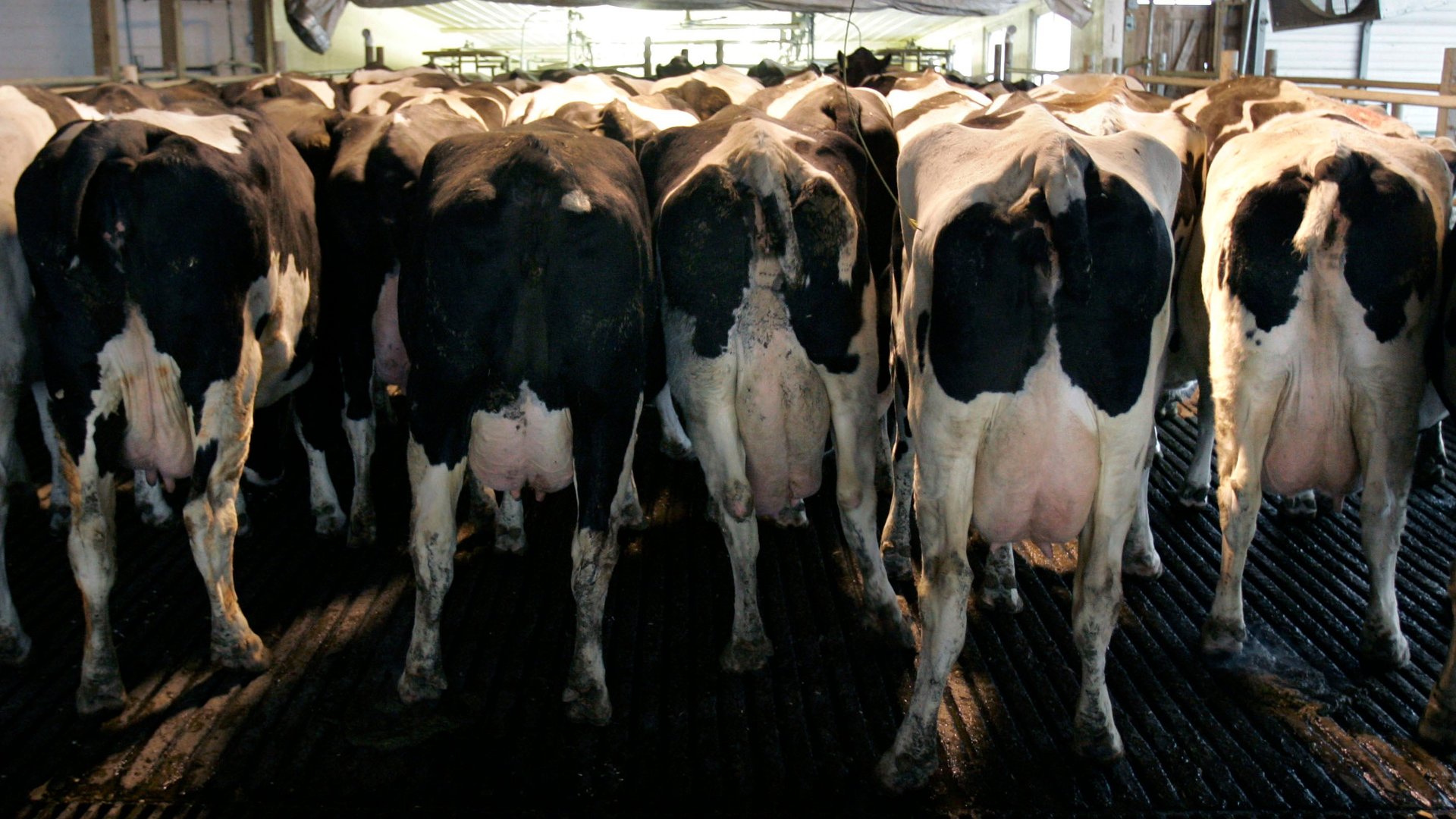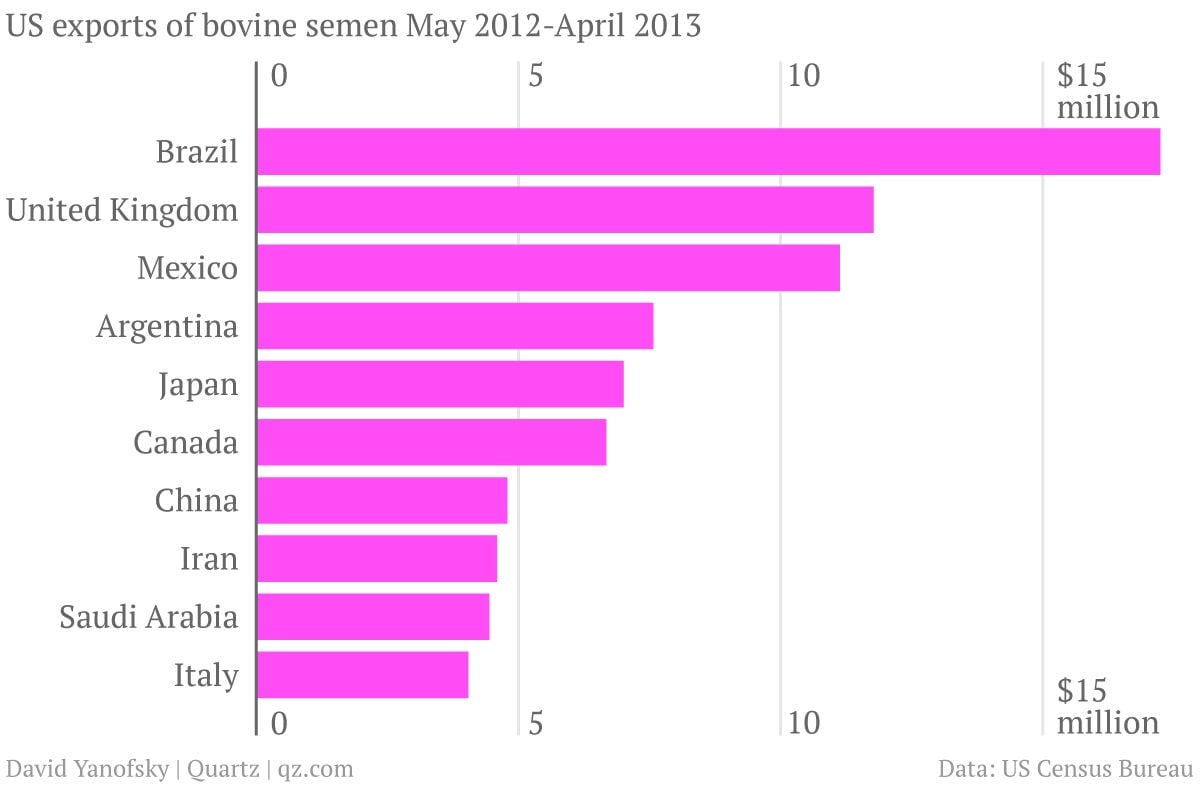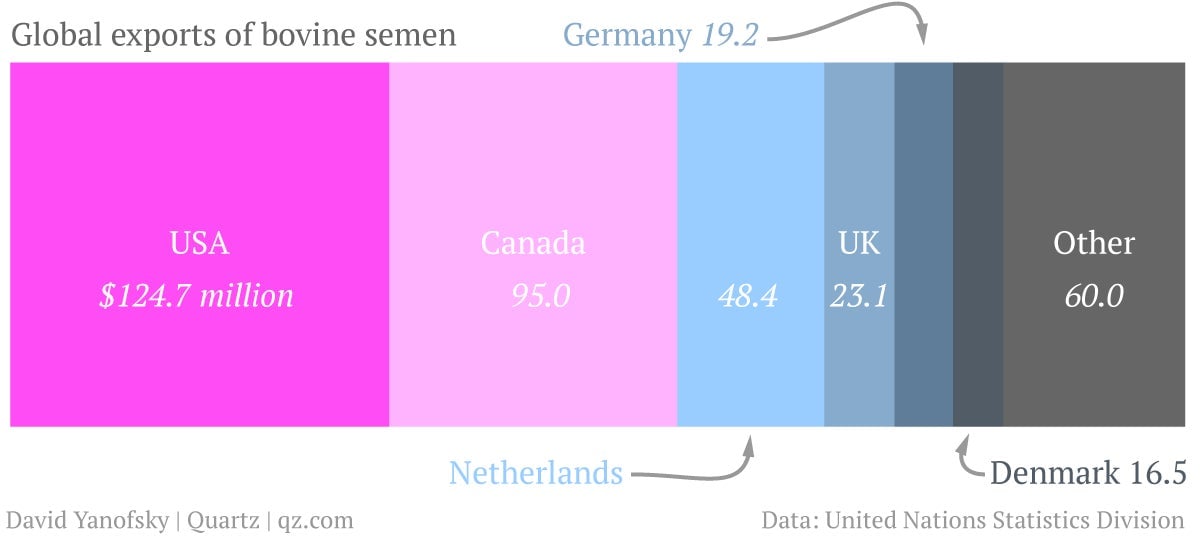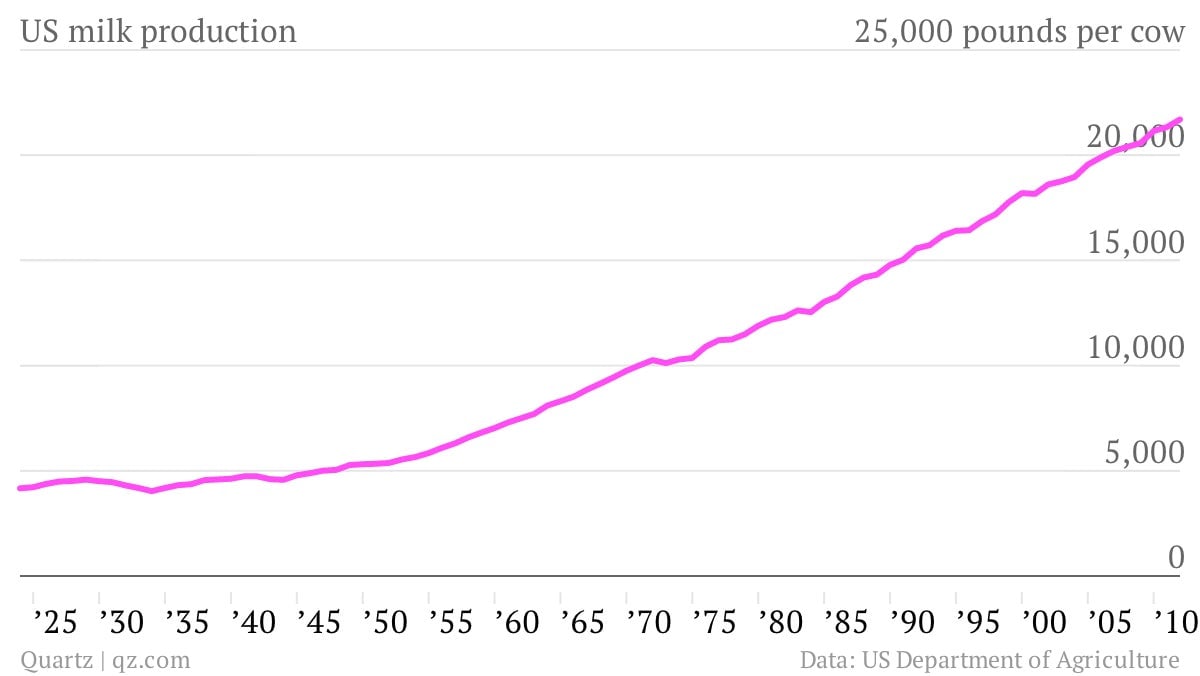Why the rest of the world is hankering for America’s bull semen
Iran is not the only country turning to the US for millions of dollars of bull’s semen. Brazil, Britain, Mexico and Argentina are big buyers too. Why? Well, it has to do with America’s cattle infrastructure and evolving thought on breeding.


Iran is not the only country turning to the US for millions of dollars of bull’s semen. Brazil, Britain, Mexico and Argentina are big buyers too. Why? Well, it has to do with America’s cattle infrastructure and evolving thought on breeding.

The international bull sperm market is dominated by the US and Canada. In 2011, 32% of bull sperm crossing country borders was American, according to the United Nations Statistics Division. Together with their neighbor to the north, Canada, the anglo-North American nations exported 57% of the international supply.

In many countries, an outbreak of Schmallenberg virus in the EU is blocking the importation of recently harvested European bovine semen. Thus, the US’s international market share is poised to grow. Excluding trade with Canada, US imports of bull sperm this year are down 64%, while exports are up 4.6%.
Farmers want sperm from American cows to help breed high milk-producing offspring. American cows have some of the highest milk production rates in the world, producing 21,697 pounds of milk each in 2012, nearly triple the production of 50 years ago according to the US Department of Agriculture.
The milk efficiency is driven both by technological improvements in farm equipment as well as genetic optimization through traditional breeding methods combined with data collection and analysis. American dairy farmers use software to predict and test the hypothetical production of milk from offspring based on the traits and data collected on possible parents, according to Dr. Harvey Blackburn the coordinator of the National Animal Germplasm Program.

The increases in productivity are not without side-effects or concerns. “In retrospect, we’ve done some really stupid things” says Les Hanson, a cattle genomics researcher in the department of Animal Science at the University of Minnesota. The quest for more efficient milk has left many cows infertile (which encourages more hormone use). Many also lack genetic diversity because of inbreeding, which provides natural resistance to pathogens as a result. Crossbreeding cattle (in other words, breeding pure-bred milk cows with other breeds of cow) can help solve these problems, according to Hanson, and there is precedent for that. After all, he says, every other farm animal is crossbred.